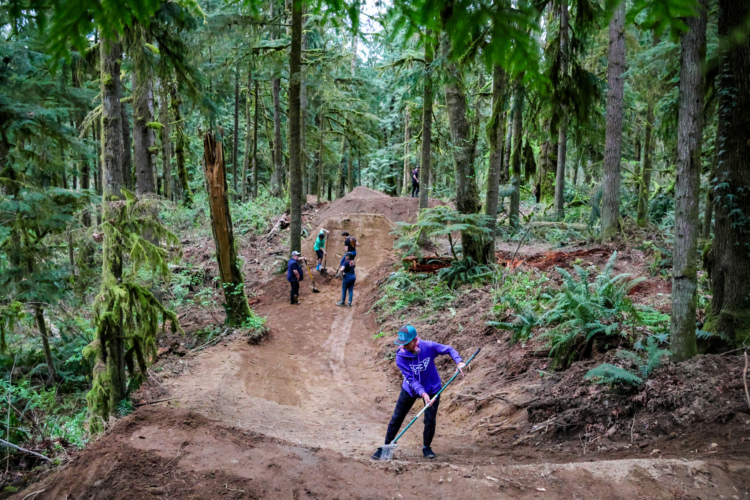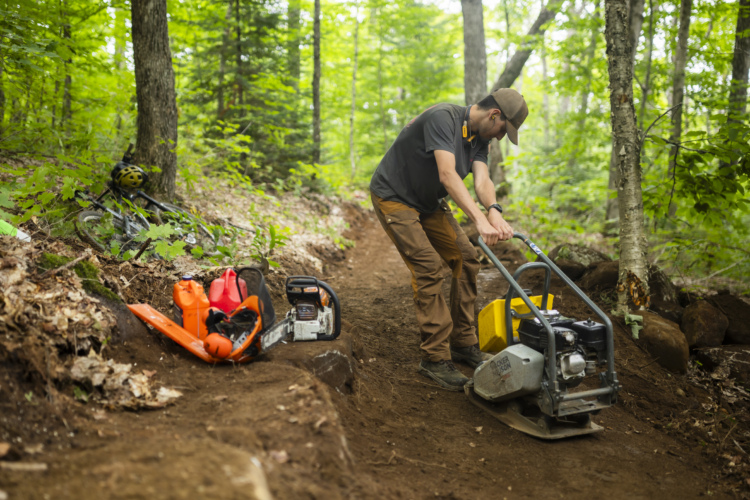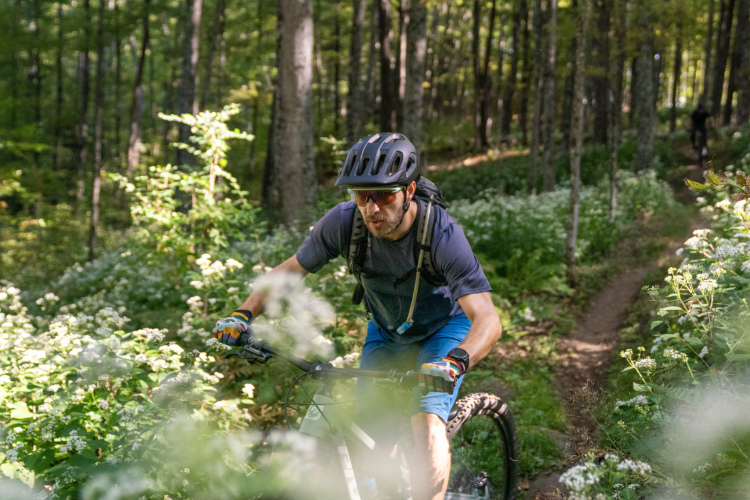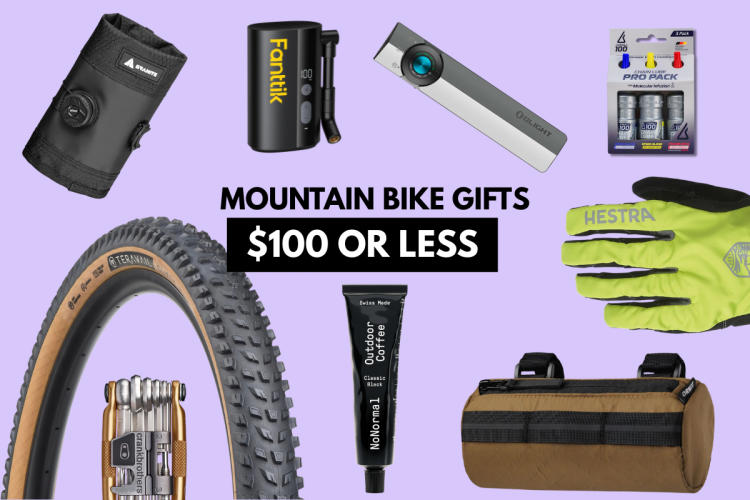
Even the most talented trail builders had to start somewhere. Surely, in the early years, there were hiccups along the way, some more costly than others. For some, that could mean purchasing a huge truck, trailer, and excavator before they fully understand the industry.
Perhaps, as they look back on things, they now see the benefit in taking a different route, such as working under a more experienced trail builder and learning all they can along the way.
However, mistakes made translate into lessons learned, and hopefully, each trail builder was better off for it, to the extent that they can now recognize similar errors in the next generation of trail builders.
Here are the top mistakes rookie trail builders make, according to the pros.

Make sure green trails are truly beginner-friendly
Mic McLane is the Eastern Washington Trails Program Manager for the Evergreen Mountain Bike Alliance (EMBA). McLane has held the position since 2023, moving to Wenatchee, Washington, after serving as the Project Manager for EMBA’s Central Chapter.
“Previous to [coming on staff], I was a volunteer trail maintenance lead, builder, and designer, and part-time education program instructor with some part-time trail work here and there as needed,” McLane told us.
All told, McLane has been with EMBA for roughly 13 years, with his first five years spent on the western side of the state. McLane got his start with EMBA by helping wherever needed, especially at Duthie Hill near Seattle, where he became known as the unofficial trail steward.
So, what mistake does McLane see rookie trail builders making?
“Not understanding what ‘beginner’ trail — green circle — really means. I think we all end up guilty of this, but we sometimes forget what it means to be a beginner,” said McLean.
Aside from not remembering what it was like to be a beginner rider, McLane also shared that our “beginner” experiences can cloud our judgment in trail building. He suggests that trail builders take a moment to consider “beginner” in relation to their own experience, since “beginner” isn’t the same experience everywhere.
One specific way green trails are made too difficult is by building them with a bench that is too narrow, which can come from a lack of understanding of the difference between the bench and the tread. A “bench” is a level platform or shelf cut into the hillside, which runs along the side of the slope. McLane explained that it is best to adhere to a six-inch rule for mild side-slopes, which means building the bench six inches wider on each side of the “tread”.
“So an 18-inch tread would equal a 30″ bench,” McLane explained.
A narrower bench creates a narrower trail, increasing the risk of the pedal striking the upside of the slope, among other things. When this is done on a green trail, it inherently ups the skill level needed, and could potentially take that particular benched section out of the beginner realm.
McLane stresses that beginner trails should ensure new mountain bikers get a feeling of accomplishment on their first ride. A poorly thought-out turn or berm, for example, can mentally defeat a new rider if they struggle on it, and can lead them to think the rest of the trail will be the same.
Make sure greens stay green and build up from there.

Spread features out on the entire trail
Peter Mills is the founder and owner of Elevated Trail Designs (ETD), the trail-building masterminds behind destinations like Rattlesnake Bike Park and Berm Park. One of their most recent projects, Hatley Pointe Bike Park, will bring lift-served riding within 30 minutes of Asheville, North Carolina.
Growing up in the Asheville area meant growing up on two wheels. Eventually, Mills began asking how he could turn his passion for mountain biking into a career, with professional trail building at the front of his mind. After college, Mills worked for and shadowed some prolific trail builders at the time — guys like Ed Sutton of Trail Dynamics and Kyle Ebbett, builder of the Teva Mountain Slopestyle, which would later be called Crankworx Colorado.
After Mills’ tenure in trail building and working with other, more experienced companies, he was ready to start ETD in 2011. And as they say, the rest is history.
As someone who has built a successful trail building company, Mills mentioned some mistakes he has seen newer trail builders and designers make. “When they design and build trail, they don’t have the experience to understand how to space things out,” he explained. “So they make everything too close together, too tight.”
Mills said this mistake can be especially noticeable with berms. Have you ever looked down a section of trail with multiple berms, ripped through it, only to find that you needed three of the five berms on the trail? That is exactly what Mills is talking about.
The same can be true for too many jumps that are close together, like three or four tabletops back-to-back. In some cases, it can be difficult to generate enough speed to clear multiple jumps like this. In spreading jumps out and adding features such as rollers to pump and generate speed, riders will no longer be clearing the first jump and casing the last two or three.
“And that just takes time, because [trail builders] get a magnifying glass, and they just focus right in front of them,” Mills said.

Honorable mentions
Of course, Mills and McLean couldn’t think of just one rookie mistake they see.
Mills wanted to remind new trail companies that they often can’t do it all. It is okay to sub out part of the jobs — welding, concrete, etc. — especially if those parts aren’t your specialty.
McLane also mentioned how ensuring proper sightlines by doing things like clearing brush — both in building and maintenance — can drastically change a trail. More than not being able to see what is coming, poor sightlines can cause braking bumps on the trail.
And while not necessarily a rookie mistake, both mentioned the need to anticipate bad weather — something rookies often learn the hard way.










0 Comments